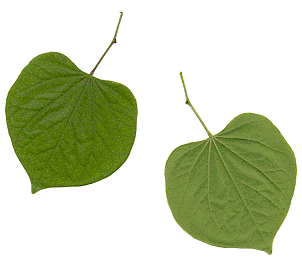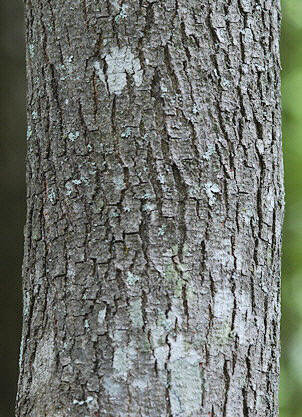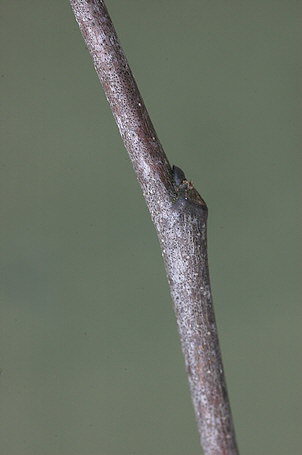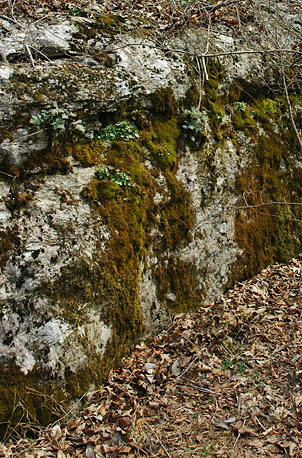| |
|
| |
 |
| |
Eastern Redbud Leaf |
Identification:
The leaves are 3 inches to 5 inches in
length, and are simple,
alternate,
entire, smooth and heart-shaped.
Note the palmate venation in the leaves. The
petiole is swollen at both ends.
Note
the alternate branching on this tree.
| |
|
 |
|
|
Eastern Redbud Bark |
The bark of the Eastern Redbud is
gray-brown, thin and smooth in young trees, and becomes fissured and
scaly on old trees. On large trunks you may be able to see the
orange inner bark.
| |
|
| |
 |
| |
Eastern Redbud Leaf Bud |
The twigs of the Eastern Redbud are
dark reddish purple to dark brown, smooth and shiny with light
lenticels. The
lateral buds are very small, 1/16
inch long, dark, blunt, and appressed.
Other Uses
and Lore:
The wood is heavy,
hard and close-grained. Because of its small size, the wood is
not used commercially.
The Trail From
Station Five to Station Six
 |
| Fissures in
Limestone Outcrop |
From Station
Five, the trail climbs a little and continues along the side of the
ridge. This is a good area to see the multitude of limestone
outcroppings along this part of the trail. The many fissures
in these outcroppings provide important shelter during the winter
months for many small mammals, reptiles and amphibians. They
also serve to trap and retain moisture for winter wildlife.
Station Six will be on the left side of the trail.
|

